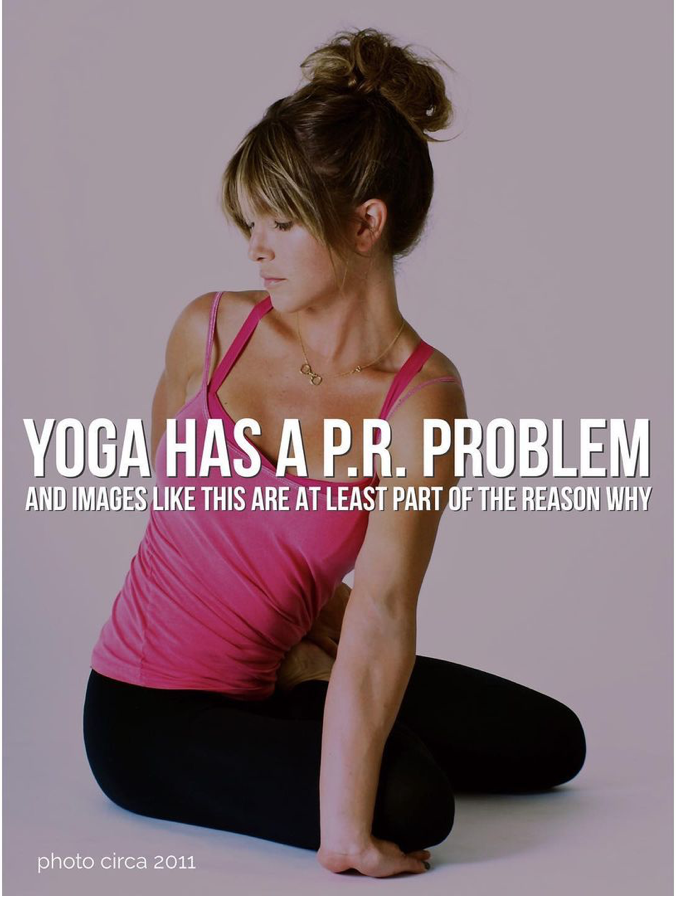| In the last few years, the yoga injuries conversation has gained traction among students and teachers—but it’s often derailed into spiritual bypassing and victim-blaming. We’re told that injury is the result of ego, of trying to be too flashy or rushing into poses that we aren’t ready for. This argument claims that since no one is forcing us to do yoga or to attempt certain shapes, any injury is on us alone. But that rhetoric not only gaslights people who are suffering from real yoga injuries, it also fails to take into account the very real interpersonal dynamics in yoga classes that can lead to injury. In the yoga community, we rarely discuss the hidden group dynamics and teacher-student dynamics that play out in class. As humans, we’ve all developed coping mechanisms and skills that help us to fit in and survive in group settings or in settings where there is an authority figure, but we rarely stop and think about the extent to which that socialization can influence our decisions and actions. I wasn’t aware of those dynamics myself until I sustained my yoga injuries. Before that, I rarely had any difficulty following along with a class and doing exactly what the instructor said; but now suddenly I was in the position of either telling the teacher that I wasn’t going to do a certain thing or simply respectfully not doing exactly what was offered. It was surprisingly uncomfortable. In my past, I’ve tended to be a perfectionist and a people pleaser, and it’s sometimes really hard for me to stay away from that tendency in group settings, especially when an authority figure is providing instruction. I’ve found myself fighting in my own head against the temptation to just go along with something, even if I knew it wasn’t right for me. People who argue that yoga injuries are the practitioner’s “fault” tend to claim that injuries are the result of an overly aggressive approach or of ego that drives us to try something we can’t handle. But that ignores the fact that, in a group setting, most people are likely to do what they’re told to do, the way that they’re told to do it. If you’re being told by someone that you respect or admire that something is good for you, or that it should be your goal, that sticks with you—and value judgments like that can stay with us for years. And even if a teacher isn’t explicitly telling students to do something, or says “do what feels right to you,” there is often an implicit judgment of what is “best.” Or we’ll see that invitation to tweak the pose paired with specific instructions of how to place a foot or a hand, hands-on adjustments, or praise of only the students doing the pose the “right” way. As a teacher, I’ve been guilty of that kind of double-speak, and I see it throughout the yoga community. The reason yoga double-speak is so damaging is that it undermines students’ ability to listen to themselves and feel confident in understanding their bodies’ needs. If yoga instruction remains precision-based and binary, students will eventually let that sense of “good” and “bad” override their own instincts. Sensory experience and pain also play into the injury conversation and are another area in which students’ diverse experiences are generally overlooked. So many factors, ranging from joint hypermobility to trauma, can mask pain such that someone can be actively damaging their body without experiencing a negative physical sensation. Telling students to stop when it hurts isn’t enough—in fact, I never experienced pain from the poses that injured me until it was too late. And I was never going fast or past what the teacher instructed. I was praised for my adherence to directions. And we can’t forget that the way we sell yoga comes into play. We’re told that yoga will help, that it’s healing, that it will lead to recovery from injury and pain. People come to yoga because they’re seeking something, they’re looking to give themselves value, or because they feel uncomfortable in themselves or their bodies, and that’s often the case even if they wouldn’t pinpoint that consciously. There’s an unconscious drive that’s often at work. They’ve been told that yoga will help them physically, emotionally, and spiritually. Of course, it can—but those outcomes are byproducts of yoga practice, and no one person’s experience is replicable. It’s important to recognize that when people come to a class with this seeking mentality, they are especially vulnerable to their existing coping mechanism, whether it’s following an authority figure or a tendency toward perfectionism. We need to admit that it’s difficult for students to parse out what is and isn’t right for them in the context of a yoga class and how they’re usually taught at this point, for so many complex and interconnected reasons. When students get injured, the teacher is in ways complicit for participating alongside them, even though there was no ill intent. I don’t say this to blame us as individuals—generally speaking, we didn’t know any better. I understand that the tendency to push responsibility back toward the student is often built on fear—that’s a natural, human impulse. And we, like our students, are also subject to external pressures to teach our classes a certain way. But as teachers, we need to be aware of the factors at play in our classes and take responsibility for the safety of our students. It’s a deeply uncomfortable process, but by leaning in to examine and learn about what’s going on in our classes, we can modify our classes to reduce the impact of power dynamics and make our classes safer and more accessible. |

Want to keep up with ALEX?
Join the mailing list





